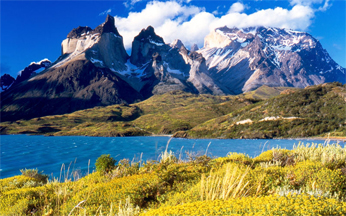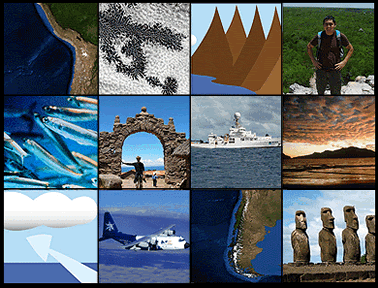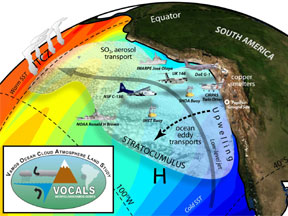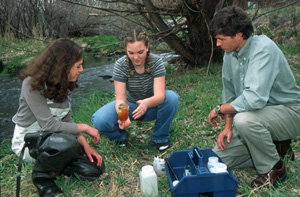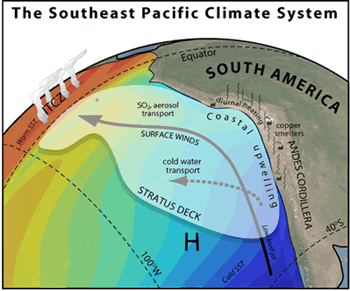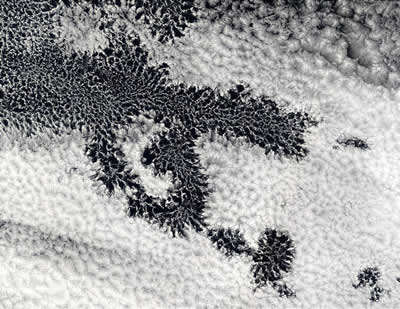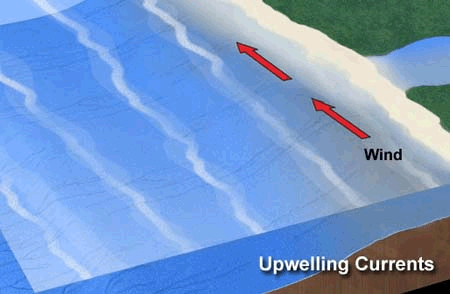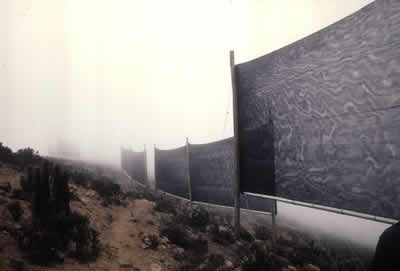Click on image for full size
Image is in Public Domain
Climate Science from the Southeast Pacific - Educators' Page
As an educator, you have the challenging task of teaching content that is integrated into other content areas to many students at various learning levels. Hopefully, looking into the VOCALS campaign can help! The VOCALS campaign will study many different scientific areas and strive to answer many interrelated questions. It is an excellent example of teamwork by scientists, of the extensive planning that must go into experiments and campaigns, and the scientific process. You can use this campaign to talk about scientific instrumentation, geography, current climate research, and science as a career. Please refer your students to our Kids' page for more information, fun, and games. And use the following related Classroom Activities with your students.
Classroom Activities
 Create Your Own Fog Uses inexpensive, easy-to-find materials!
Create Your Own Fog Uses inexpensive, easy-to-find materials!
 The Difference Between Weather and Climate Includes graphing exercises!
The Difference Between Weather and Climate Includes graphing exercises!
 Exploring Density with Salt and Fresh Water: Par 5 A fun activity that involves investigating the interaction between fresh water and salt water.
Exploring Density with Salt and Fresh Water: Par 5 A fun activity that involves investigating the interaction between fresh water and salt water.
 Introduction to Maps This quick lesson exposes students to a variety of types of maps.
Introduction to Maps This quick lesson exposes students to a variety of types of maps.
 Land Plan Challenge Emphasizes teamwork and how city planning affects the environment and the larger community.
Land Plan Challenge Emphasizes teamwork and how city planning affects the environment and the larger community.
 Make a Classroom Map Students learn geographical skills of map making by constructing a map of their classroom.
Make a Classroom Map Students learn geographical skills of map making by constructing a map of their classroom.
 The Scientist Project A great activity that introduces your class to many different scientists. Teamwork and creativity a must!
The Scientist Project A great activity that introduces your class to many different scientists. Teamwork and creativity a must!
 Temperature and the Earth's Atmosphere Interpret graphs to learn how temperature varies through the atmosphere.
Temperature and the Earth's Atmosphere Interpret graphs to learn how temperature varies through the atmosphere.
 Three Clouds Activity One captivating demonstration and two hands-on activities - all about clouds!
Three Clouds Activity One captivating demonstration and two hands-on activities - all about clouds!
 Using Current Event Articles in the Science Classroom Try these new ideas to get your students hooked on today's science!
Using Current Event Articles in the Science Classroom Try these new ideas to get your students hooked on today's science!


